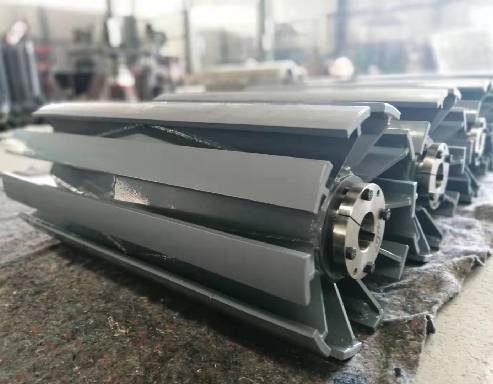 Afrikaans
Afrikaans  Albanian
Albanian  Amharic
Amharic  Arabic
Arabic  Armenian
Armenian  Azerbaijani
Azerbaijani  Basque
Basque  Belarusian
Belarusian  Bengali
Bengali  Bosnian
Bosnian  Bulgarian
Bulgarian  Catalan
Catalan  Cebuano
Cebuano  Corsican
Corsican  Croatian
Croatian  Czech
Czech  Danish
Danish  Dutch
Dutch  English
English  Esperanto
Esperanto  Estonian
Estonian  Finnish
Finnish  French
French  Frisian
Frisian  Galician
Galician  Georgian
Georgian  German
German  Greek
Greek  Gujarati
Gujarati  Haitian Creole
Haitian Creole  hausa
hausa  hawaiian
hawaiian  Hebrew
Hebrew  Hindi
Hindi  Miao
Miao  Hungarian
Hungarian  Icelandic
Icelandic  igbo
igbo  Indonesian
Indonesian  irish
irish  Italian
Italian  Japanese
Japanese  Javanese
Javanese  Kannada
Kannada  kazakh
kazakh  Khmer
Khmer  Rwandese
Rwandese  Korean
Korean  Kurdish
Kurdish  Kyrgyz
Kyrgyz  Lao
Lao  Latin
Latin  Latvian
Latvian  Lithuanian
Lithuanian  Luxembourgish
Luxembourgish  Macedonian
Macedonian  Malgashi
Malgashi  Malay
Malay  Malayalam
Malayalam  Maltese
Maltese  Maori
Maori  Marathi
Marathi  Mongolian
Mongolian  Myanmar
Myanmar  Nepali
Nepali  Norwegian
Norwegian  Norwegian
Norwegian  Occitan
Occitan  Pashto
Pashto  Persian
Persian  Polish
Polish  Portuguese
Portuguese  Punjabi
Punjabi  Romanian
Romanian  Russian
Russian  Samoan
Samoan  Scottish Gaelic
Scottish Gaelic  Serbian
Serbian  Sesotho
Sesotho  Shona
Shona  Sindhi
Sindhi  Sinhala
Sinhala  Slovak
Slovak  Slovenian
Slovenian  Somali
Somali  Spanish
Spanish  Sundanese
Sundanese  Swahili
Swahili  Swedish
Swedish  Tagalog
Tagalog  Tajik
Tajik  Tamil
Tamil  Tatar
Tatar  Telugu
Telugu  Thai
Thai  Turkish
Turkish  Turkmen
Turkmen  Ukrainian
Ukrainian  Urdu
Urdu  Uighur
Uighur  Uzbek
Uzbek  Vietnamese
Vietnamese  Welsh
Welsh  Bantu
Bantu  Yiddish
Yiddish  Yoruba
Yoruba  Zulu
Zulu Essential Elements and Functions of Conveyor Pulley Systems for Efficient Material Handling
Understanding Conveyor Pulley Components
Conveyor systems are an indispensable part of many industrial operations, facilitating the movement of materials and components throughout various processes. One of the critical elements in a conveyor system is the conveyor pulley, which plays a significant role in ensuring the system’s efficiency and reliability. In this article, we will explore the various components of conveyor pulleys, their functions, and their importance in the overall conveyor system.
Types of Conveyor Pulleys
Conveyor pulleys come in various types, each designed for specific applications. The primary types include drive pulleys, return pulleys, tail pulleys, and snub pulleys.
1. Drive Pulleys These are the primary pulleys responsible for driving the conveyor belt. They are powered by a motor and help in moving the belt forward. Drive pulleys are equipped with a lagging surface that enhances grip and prevents slippage, ensuring effective power transmission.
2. Return Pulleys Located at the end of the conveyor system, return pulleys support the conveyor belt as it returns to the starting point. They are essential for maintaining the belt’s alignment and tension, contributing to a smooth operation.
3. Tail Pulleys Similar to return pulleys, tail pulleys are found at the discharge end of the conveyor system. They help to redirect the belt back to the drive pulley, ensuring that the material being transported is effectively discharged at the desired location.
Components of Conveyor Pulleys
Each type of pulley consists of several key components that contribute to its functionality
conveyor pulley components

1. Shaft The shaft is the core component of the pulley that transmits torque from the motor. It must be sturdy enough to withstand the forces applied during operation.
2. Shell The shell is the cylindrical part of the pulley that the conveyor belt wraps around. It is typically made from materials such as steel or rubber, depending on the application requirements. The shell provides support to the belt and is crucial for effective material handling.
3. Lagging This is a rubber or ceramic layer applied to the shell's surface. Lagging increases friction between the pulley and the conveyor belt, reducing slippage and improving belt grip. Additionally, it provides added protection against wear and tear.
4. Bearings Bearings facilitate the smooth rotation of the pulley around the shaft. They must be selected based on load capacity and environmental conditions to ensure longevity and reliability.
5. End Caps These are protective covers that secure the bearings in place and prevent contaminants from entering the pulley. End caps are critical for maintaining the pulley’s integrity and minimizing maintenance needs.
Importance of Conveyor Pulley Components
The efficiency and reliability of a conveyor system heavily depend on the quality and functionality of its pulleys. Properly designed and maintained conveyor pulleys enhance the overall performance of the conveyor system. They minimize downtime due to failures, reduce maintenance costs, and increase productivity.
Additionally, choosing the right pulley components tailored to the specific application ensures longevity and efficiency. Factors like load capacity, environmental conditions, and material type are crucial considerations in the design and selection process.
In conclusion, conveyor pulleys are vital components of any conveyor system, serving various functions essential for efficient material handling. By understanding the types and components of conveyor pulleys, industries can make informed decisions that improve their operational efficiency and reduce maintenance costs. As technology continues to advance, innovations in pulley design and materials will undoubtedly pave the way for even more efficient and reliable conveyor systems.
-
Revolutionizing Conveyor Reliability with Advanced Rubber Lagging PulleysNewsJul.22,2025
-
Powering Precision and Durability with Expert Manufacturers of Conveyor ComponentsNewsJul.22,2025
-
Optimizing Conveyor Systems with Advanced Conveyor AccessoriesNewsJul.22,2025
-
Maximize Conveyor Efficiency with Quality Conveyor Idler PulleysNewsJul.22,2025
-
Future-Proof Your Conveyor System with High-Performance Polyurethane RollerNewsJul.22,2025
-
Driving Efficiency Forward with Quality Idlers and RollersNewsJul.22,2025





























